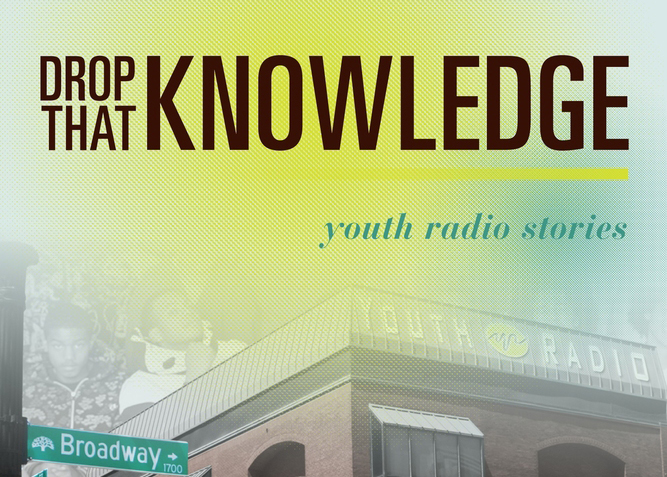A few years ago I read “Drop that Knowledge”, a powerful and informative book challenging the notions of truth and who speaks it. It guides you through the experiences of an organization that’s mission is “to create an environment in which young people can generate powerful, socially meaningful, urgently needed content in an environment promoting positive youth and community development.” (pp. 40) Throughout the book the reader is introduced to the stories of youth producers and their adult mentors and colleagues as it provides explicit suggestions for educators and journalist to integrate youth storytelling as a pedagogical and personal development tool.
The book illustrates vividly how Youth Radio has developed a means of teaching through media (instead of about media) and focusing on youth production (instead of consumption). Youth Media stresses the importance of countervailing views in increasing understanding and provides youth a way fulfill their “desire for community, interdependence, and connection,” and to “transcend individual difference.”
“Drop that Knowledge” touches on a number of competencies popularized by Henry Jenkins, including the notions of converged literacy and appropriation, and also puts forth a new way of teaching referred to as “collegial pedagogy” in which there is joint media creation between youth and adults – with youth as the ultimate decision makers – in a way that supports reciprocal teaching and learning while respecting the authority afforded (to adults) by virtue of culture, history, networks and experience. By way of “collegial pedagogy” students are able to learn how to cultivate a “point of voice” which is a way of making a statement through various means of appropriation and narrative. Furthermore, the book emphasizes the importance of accountability and providing sustained opportunities for young people to tell their stories instead of the “single burst” approach. Young people need the “backing of collectives …to leverage power and influence”. (pp. 101)
Revisiting this today, I can’t help but think about Glass and the affordances of augmented reality technology as it relates to teaching, learning and storytelling. It was instantly apparent to me the potential for journalist and other disciplines that engage in interviewing, such as corporate trainers, to gather more authentic accounts. Wearing Glass frees you to be more relaxed, you don’t need to sit a tape recorder in the middle of a table or furiously write notes on a pad. You can be present, have a conversation, and get the real story. But perhaps even more profound is its potential to enhance teaching and learning. The fact that you can use Glass for real-world exploration and then instantly push those experiences into the cloud – our universal stream of consciousness as it were – can’t be overstated. Because Glass is such an unobtrusive technology, it enables its wearer to effectively externalize memories without much thought or effort.
While there are some teachers currently experimenting with Augmented Reality in the Classroom using tools like Aurasma, it’s not clear yet if Glass will be affordable enough for widespread adoption. This raises all sorts of equity issues. Though it’s easy to believe in the idea of “digital natives”, Glass and other AR technologies introduce new forms of literacy that must be learned. Operating Glass through voice and gestures are new ways of communicating and interacting with technology; students with access to these technologies alongside teachers who can provide guidance in their use will have an advantage over those who don’t.
It’s clear that with the right apps, Glass can take visual thinking, intelligent tutoring and anchored instruction to new levels. But as the book points out, youths need education and mentorship to become sophisticated media producers and take advantage of networks that come with experience. Access to these tools and quality teachers with technology experience could have profound ramifications for the education enterprise; academic institutions should take note.

